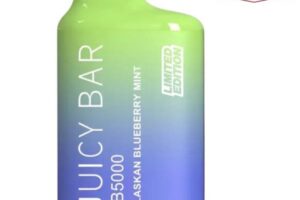Cold-rolled (CR) steel strip coils are produced by passing hot-rolled steel through rollers at room temperature, achieving precise dimensions and a smooth, bright finish. This makes them ideal for applications like automotive components, appliances, electronics, and precision manufacturing where aesthetics and tolerances matter.
1. Key Factors Influencing CR Strip Coil Prices
a) Raw Material Costs
Steel prices are closely tied to fluctuations in base materials such as iron ore, scrap, and alloying elements (e.g., manganese, silicon). Market pricing for these inputs—often indexed on global exchanges—affects overall production costs.
b) Energy & Production Expenses
Cold rolling demands more energy than hot rolling. Costs associated with electricity, furnace heating, machinery wear, and maintenance significantly influence pricing.
c) Steel Grade & Coil Specifications
Prices vary based on grade (e.g., SPCC, DC01/DC03, S250GD) and material thickness, width, and weight. Higher-grade, thinner, or pre-painted/coated coils command premium prices due to additional processing.
d) Location & Logistics
Costs fluctuate based on proximity to production facilities or ports. In Pakistan, transport between industrial hubs like Karachi and Faisalabad, or import-related duties, play a major role in final pricing.
e) Supply-Demand Dynamics
Construction booms, infrastructure projects, or automotive demand can increase prices through higher commercial demand.
f) Currency & Tariffs
For importers in Pakistan, US dollar rates and import duties (customs, anti-dumping, regulatory levies) significantly affect landed costs.
2. Global & Regional Pricing Trends
-
SteelBenchmarker, Metal Bulletin, and CRU offer global indices, though often behind paywalls.
-
In recent years, CR strip coil prices have varied widely due to shifting demand—dropping during economic slowdowns and spiking during infrastructure drives or supply shortages.
As of early 2025, global flat-rolled steel products were selling in the range of $750–$950 USD per metric ton, depending on specifications and region. (Note: Price details are illustrative and should be confirmed via up-to-date market sources.)
3. Pakistan Market Snapshot: CR Strip Coil Pricing (Hypothetical Estimate)
Since real-time local data is hard to compile publicly, here’s an estimated price range for CR strip coils in Pakistan—based on industry inputs and regional insights:
-
Basic (standard-grade) CR Strip Coil: ~PKR 230,000–280,000 per metric ton
-
Higher-grade / Coated CR Coils: ~PKR 280,000–350,000 per ton
These ranges may include duty, transport charges, and provincial markup. For importers, exchange rate fluctuations could push the landed cost beyond PKR 300,000 under certain conditions.
4. Price Breakdown (Approximate Comparison)
| Cost Component | Estimated Cost (PKR per MT) |
|---|---|
| Ex-mill cost (local, uncoated) | 200,000 – 230,000 |
| Processing / packaging | 5,000 – 10,000 |
| Inland transport | 10,000 – 20,000 |
| Taxes & Duties | 15,000 – 30,000 (if imported) |
| Final Delivery Cost | 230,000 – 300,000+ |
Figures are illustrative—actual costs can vary widely. Always confirm through direct supplier interaction.
5. How to Obtain Accurate Pricing in Pakistan
-
Engage Local Mills & Traders
Reach out to major steel manufacturers and traders in industrial zones like Karachi, Lahore, and Faisalabad. Ask for quotations specifying the grade, thickness, weight, and delivery terms. -
Use Government & Trade Platforms
The Pakistan Bureau of Statistics or trade bulletins may publish periodic data on steel imports and domestic production prices. -
Access Pricing Services (Subscription-Based)
Platforms like CRU, Platts, or Metal Bulletin offer detailed indices. While not always freely accessible, they provide comprehensive global and regional pricing insights. -
Monitor Currency & Import Taxes
Pay attention to the PKR/USD exchange rate, and review applicable customs duties or anti-dumping duties. These can substantially increase landed costs. -
Join Industry Associations
Organizations like the Pakistan Steel Mills or trade chambers may share pricing trends, upcoming project demand, or tender information. -
Compare Suppliers & Negotiate Terms
Volume discounts, deferred payments, and bulk transport deals can reduce per-metric-ton prices—especially if you’re ordering large quantities.
6. Real-World Buying Tips
-
Clarify Product Specs: Define grade (e.g., SPCC), tolerance class, and whether you need coatings or surface treatments.
-
Specify Packaging Requirements: Local purchasers may require branded packaging or protective film, which adds to cost.
-
Understand Term Definitions: Know whether prices are ex-mill, FOB port, or inclusive of delivery and taxes.
-
Ask for Mill Test Certificates (MTC): Ensure mechanical and chemical compliance—crucial for quality assurance.
-
Use Forward Contracts: In volatile markets, forward booking with agreed pricing and delivery may help stabilize cost.
-
Plan for Lead Times: Domestic supply might offer shorter delivery (2–4 weeks) compared to 6–8+ weeks for imports.
7. Pricing Outlook & Market Trends
-
Infrastructure Investments: Pakistan has plans for significant infrastructure and power projects, which could elevate long-term demand and prices for CR coils.
-
Sustainability & Energy Costs: Cold rolling is energy-intensive, so any fluctuations in electricity tariffs—or moves toward electric-arc furnaces—could alter production costs.
-
Imported vs Local Competitiveness: If international markets remain cost-effective even after duties, imports may continue to influence local pricing.
-
Volatile Forex: Any depreciation of the Pakistani Rupee can raise costs for import-dependent sectors.
Conclusion
Cold-rolled steel strip coil prices in Pakistan are shaped by a mix of raw material costs, energy and production expenses, supply-chain dynamics, currency movements, and local demand. While rough estimates suggest rates between PKR 230,000 to over 300,000 per metric ton, accurate figures depend heavily on grade, volume, delivery terms, and current market fluctuations.

